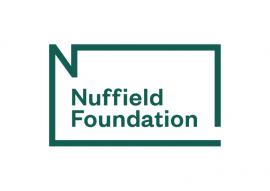Transformations of graphs
This list of resources contains activities designed to support the teaching and learning of sketching translations and reflections of the graph of a given function.
Visit the secondary mathematics webpage to access all lists.
- ALL
- Teacher guidance
- Presentation
- Interactive resource
- Group work
- Activity sheet
- Other
Teacher guidance
Spreadsheet Graphs
This resource is designed to be used to introduce the shape and main features of proportional, linear, inverse proportional, and quadratic graphs. Different versions of Excel spreadsheets allow students to explore how the shape and the position of a graph changes when the constants in its equation are altered.
Students look for connections between the numbers in equations like
y =2x + 3
y = 20/x
y = 5x -3
y = x2
and the graphs that represent them.
Presentation
Quadratic Equations
This interactive resource is designed to enable students to explore what is meant by a quadratic equation, the meaning of the coefficients of a quadratic equation and to be able to solve quadratic equations.
An introduction page gives examples of where quadratic equations can be found which is useful for class discussion. There follows an explanation of the first task in which students have to investigate how changing the coefficients a, b and c in the function f(x) =a(x+b)2+c affect the graph.
The second activity requires students to change the values of a, b and c so that the green graph matches the blue graph on the screen.
The third activity asks students to form equations to match the paths shown on the screen.
The fourth activity explores the roots of a quadratic equation. This is followed by pages of notes explaining the nature of quadratic equations including the formula for solving quadratic equations, the determinant, factorising a quadratic and completing the square. The final exercise asks students to solve a series of quadratic equations.
Interactive resource
Transformation of Functions
This interactive excel program from The Virtual Textbook allows students to explore the relationship between the transformation of functions and the associated graphs. Functions explored include straight lines, quadratic and cubic functions as well as sine and cosine curves. Each type of function can be fully transformed in stages. The algebraic expression for each function can be hidden or revealed. By selecting "new" the interactive sheets present the student with the graph of a new function so understanding can be tested.
The resource also has 12 sheets of printable sets of questions which may be suitable for use within the classroom.
Group work
Exploring Trigonometrical Graphs A12
This resource contains activities in which students explore trigonometrical graphs by recognising translations, stretches and reflections from their equations, sketching the graphs and learning about the period and amplitude. Students should be familiar with the graphs of y = sin x and y = cos x and have previously met the basic transformations of functions, i.e. one-way stretches, translations and reflections, but not necessarily in the context of trigonometrical graphs. This is quiet high level involving complex justifications and mathematical language. Appropriate for students aiming for the top grades at GCSE.
These materials exemplify the ideas and approaches adopted in the Standards Unit pilot. To get best value from them use them in association with the guidance and other materials in the resource. Extra guidance can be found here.
Activity sheet
Exploring transformations of graphs
This activity requires students to:
- use and interpret function notation,
- sketch graphs using key points,
- explore the common transformations of translate parallel to the y axis,
- translate parallel to the x axis,
- stretch parallel to the y axis from the x axis,
- stretch parallel to the x axis from the y axis
Ideally students should have access to appropriate graph plotting technology to investigate the tasks. Students are required to explore different transformations, record their results on the sheet and use their results to generalise the effect of each transformation.
It is recommended that students begin their investigation with linear functions, quadratic functions and a reciprocal function. Extension suggestions are to work with general equations, trigonometric equations and to explore reflections in the x axis and reflections in the y axis. The resource includes teacher notes with guidance on teaching strategies and how to model examples for students.
Thinking Questions
This resource contains a number of open–ended questions which explore understanding and allow for a variety of approaches. Each question is easily accessible and can be extended to make a more complex problem. Students are required to justify their answer and, where possible, generalise their answer. Students require problem solving skills and reasoning skills to tackle the problems; trial and error alone will not be sufficient. Trigonometric functions are featured in one problem exploring translations of sine and cosine graphs. It could be useful to consolidate and/or assess learners understanding of trigonometric functions linked to translations of graphs.
Other
Graph Transformations
This is a collection of three videos from Maths Master.
The first resource explains what is meant by function notation and how transformations can be expressed using this notation.
The second resource contains two videos showing how graphs can be translated. The graphs are shown along with the relevant notation.
The third resource contains two videos showing how graphs can be stretched. The graphs are shown along with the relevant notation.






